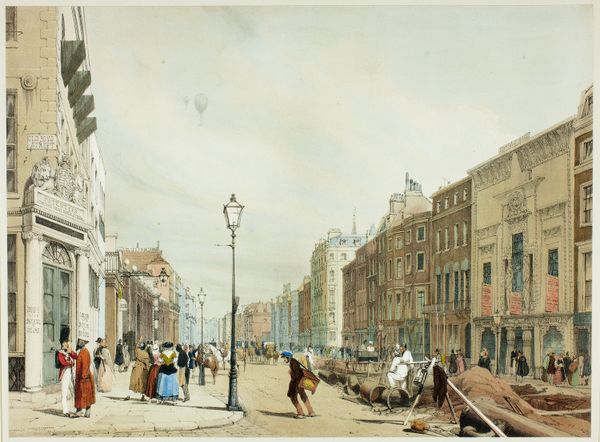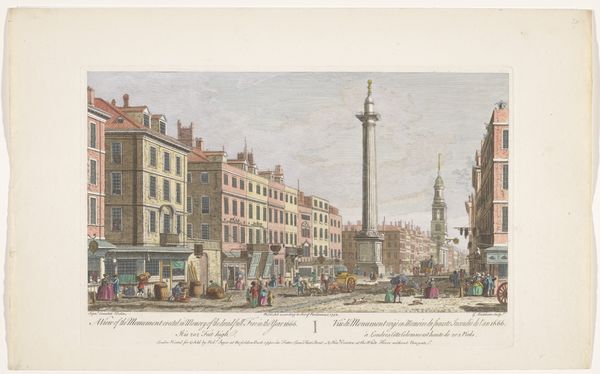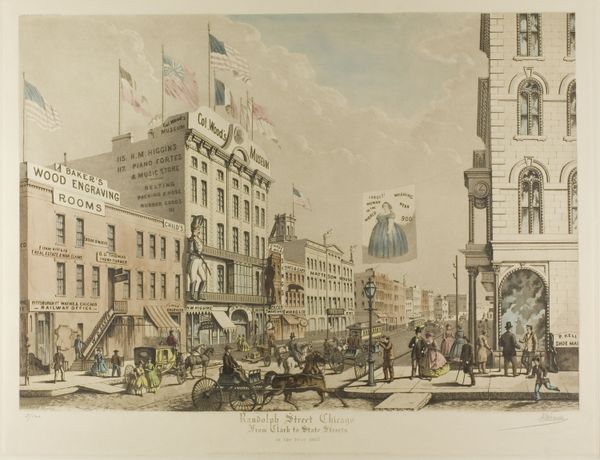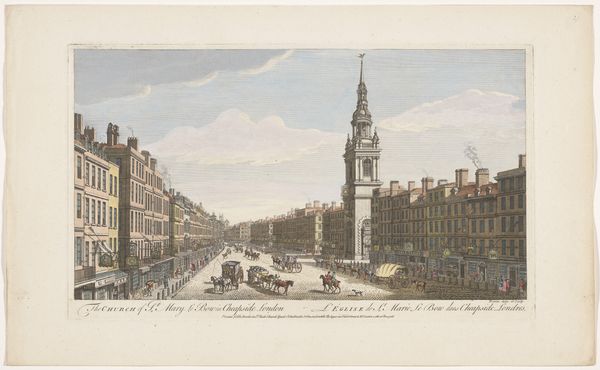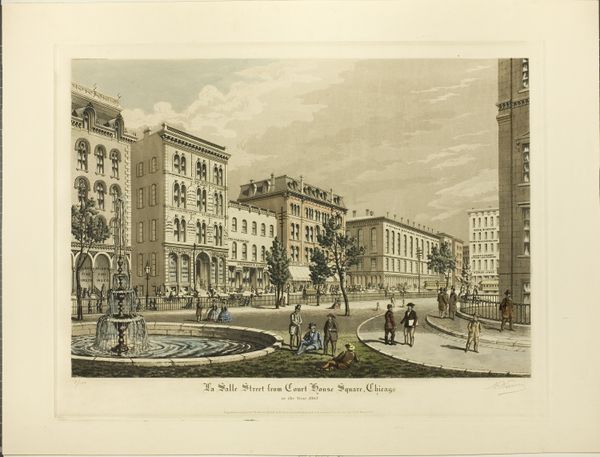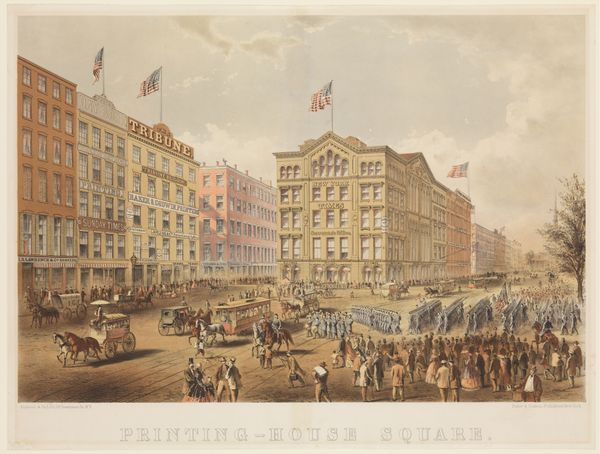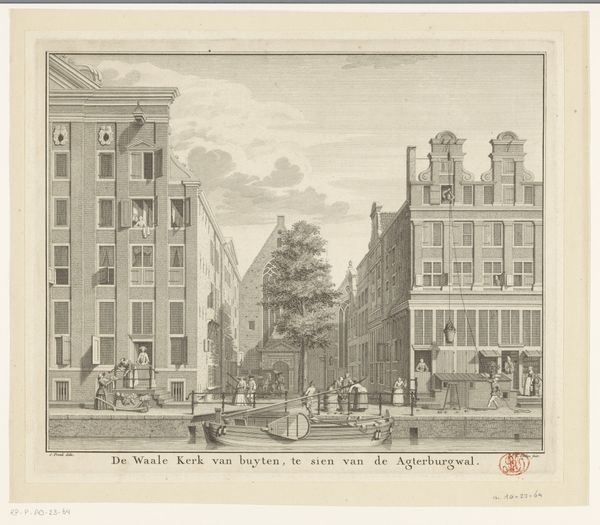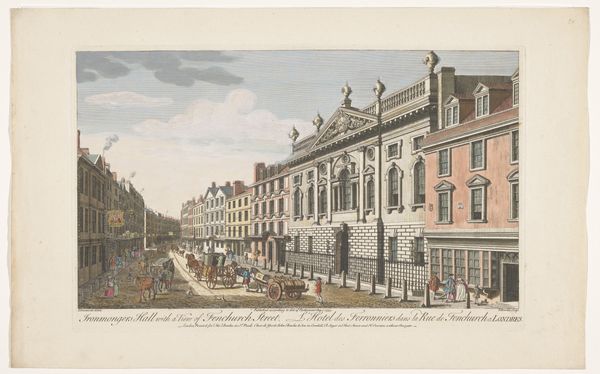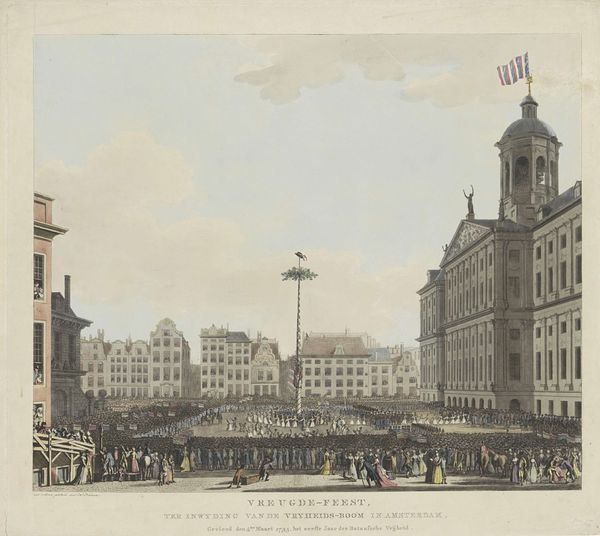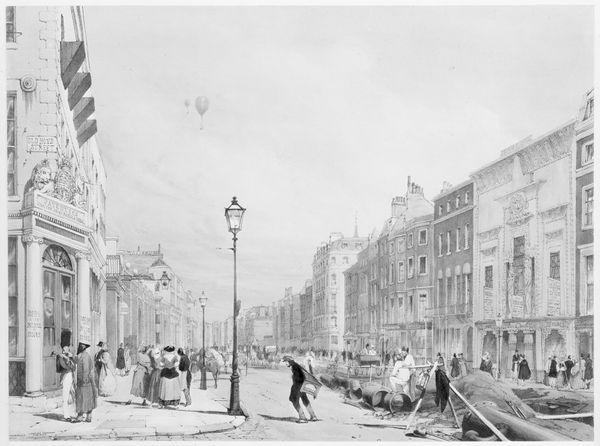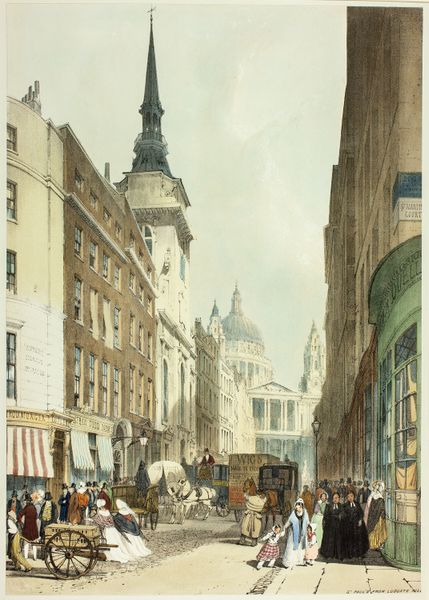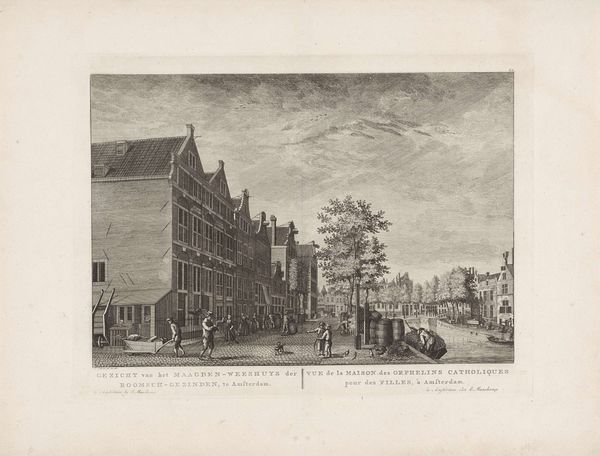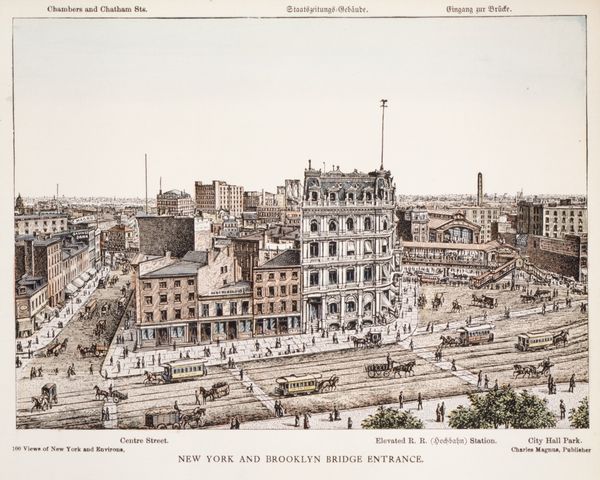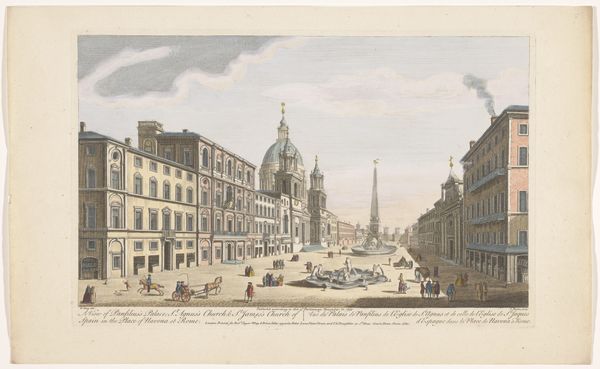
drawing, lithograph, print, etching, photography, collotype
#
drawing
#
street-art
#
lithograph
# print
#
etching
#
photography
#
collotype
#
orientalism
#
cityscape
#
street
#
mixed media
#
watercolor
#
realism
Dimensions: 11 x 8 1/2 in. (27.9 x 21.6 cm)
Copyright: Public Domain
Curator: This print, titled "Broadway at 42nd Street, New York," offers us a glimpse into the bustling life of this iconic intersection sometime between 1850 and 1900. It’s credited to Charles Magnus & Company, employing a fascinating blend of lithography, etching, collotype, and perhaps even drawing and watercolor. Editor: My immediate impression is the overwhelming sense of activity – the sheer density of people and horse-drawn carriages! You can almost hear the cacophony of city sounds from a bygone era. It feels surprisingly… vibrant, despite its age. Curator: Indeed, the vibrant detail speaks volumes. Consider how the production process itself – this amalgamation of printing techniques – mirrors the layering and complex interplay of urban life depicted. It blurs lines between craft and mass production, really showing how labor manifests into what is viewed as the grand design. Editor: I am very drawn to the representation of labor inherent in the transportation. Each driver's labor, the exploitation of each animal, the infrastructure. But zooming out, let’s consider Broadway itself, right? It's always been this contested space—a site of aspiration, commerce, and entertainment, deeply woven into the fabric of class and social mobility of marginalized identities trying to achieve status in a racist society. The intersectionality feels prescient. Curator: Exactly! This image reflects and reinforces that narrative. The material conditions of that era gave way to the class differences on display. Think about the actual cost of creating such an image - the availability of resources, the expertise of laborers, the expense and time taken in mixed-media lithography like this. The means of production informed what aspects of life would be displayed in turn, perpetuating capitalist themes. Editor: And those overhead telegraph lines also catch my attention; what a fascinating depiction of the emerging technologies shaping how citizens experienced time and place. It really forces you to think about gender, class, and race. The print almost suggests how urban infrastructure acts upon these intersecting social categories. Who benefited? Curator: Absolutely. Considering that technology alongside the choice of using, as this print does, what appears to be labor intensive modes of etching and lithography forces one to wonder what decisions led Magnus to make the choices he made as a publisher. Editor: Precisely. In essence, a snapshot in time which contains its own social critique on the society it portrays, down to its means of manufacture. Curator: Yes, I’d have to agree. By dissecting its means of production, we better perceive its power to comment.
Comments
No comments
Be the first to comment and join the conversation on the ultimate creative platform.
